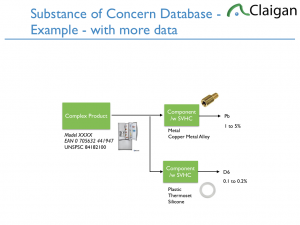
Changes coming for REACH SVHC
By Tim Holt, senior technical lead, corporate social responsibility and laboratory operations, Claigan Environmental
Electronics Engineering Environmental environmental environmentalAdditional compliance requirements for products containing REACH SVHCs are coming - starting January 5th, 2021
What is REACH SVHC?
According to Article 33 of the EU REACH Regulation, companies placing products on the market in the EU are currently required to identify the Substances of Very High Concern (SVHCs) above 0.1% in an article in their products. What constitutes an ‘article’ is not always clear, however in general, an article is any material used in a product. If the material uses a safety data sheet or SDS (e.g. paint), then it is not yet considered an article. Only when it is applied to a material (e.g. metal) are the combined paint and metal considered an article. Once SVHCs have been identified, companies must create a SVHC declaration to communicate this to their customers. 
What are the changes?
SVHC declaration must be registered
Starting in 2021, all products that currently require a SVHC declaration must be registered in the new Waste Framework Directive Database (WFDD). Companies will also have the option to register products that do not contain SVHCs. This option will cut down on future customer requests.
The process will largely be the same whether you are registering a single component (e.g. brass insert) or a complex product (e.g. fridge). There will be some general information required about your company (e.g.name, contact details) and the product (e.g. product code).
The registration system will have a series of pull-down menus to enter information about the specific materials and SVHC’s. For the brass insert you will select [metal]-[copper metal alloy]. Then you will need to identify the SVHC and the concentration range [Pb]- [1-5%]. Finally, you will need to select any applicable safe use information (e.g. advice to workers, consumers, waste treatment operators, etc.). There will also be the option to enter a custom warning.
How to incorporate your data
Now let’s consider a complex product such as the fridge. The main product registration will be for the fridge unit. There will then be a breakdown for each article within the fridge that contains an SVHC (n.b. articles that do not contain SVHCs will not need to be included). From this point onwards, the process will be similar to the single component only this time there are likely more components to include. Let’s imagine that our fridge has the same brass insert plus a silicone ring. We enter the same information for the brass insert. Then, we identify [plastic]-[thermoset plastic]-[silicone] and the SVHC [D6]-[0.1-0.2%].
There will be questions on how your customers of component manufacturers will incorporate your data. Do they link to your specific component? Do they enter the component generically? The latter may be simpler in order to avoid having to track down the specific part number for the component.
——————–
Claigan Environmental is a Kanata, Ontario-based provider of regulatory consulting and ISO 17025 accredited laboratory testing for restricted materials legislation.
